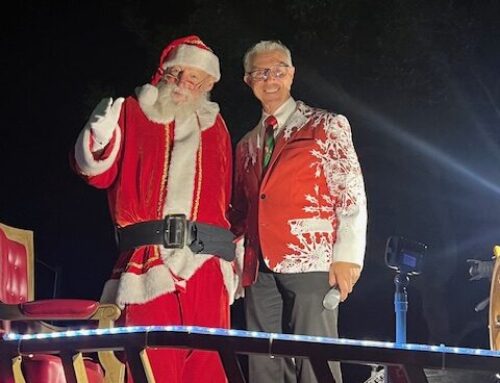Published in the November 8 – 21, 2017 issue of Morgan Hill Life

Joseph Peters Atwell, a junior at Oakwood School, participated in the 2015 Science Fair.
Morgan Hill Life Photo File
We had a conversation with a local high school science teacher about what makes good science learning in the classroom. “I emphasize to the students it’s all about the data,” the educator told us. “Everything about science is about the data.”
Collecting data and recording and analyzing the metrics in experiments and research is an important part of the scientific method, of course. But science populizers such as Neil deGrasse Tyson, Bill Nye and Michio Kaku might place the emphasis elsewhere when teaching science to middle school and high school students. Science is an activity where the human mind is powered by the fuel of curiosity to explore the universe and discover knowledge that enables us to see the world in wonderful new ways. Unfortunately, some teachers often forget the “wow factor” in science learning. Their students get the message that “data is for dorks.” The students soon build a bias that science is “boring.” Science learning when taught well, however, is a fun and mentally-stimulating process where students feel the excitement of ideas in physics, chemistry, biology, human behavior and information technology.
 The data-driven teaching approach might be one of the reasons American students are turned off to science — and as a result why they do poorly in comparison testing with students from other nations. The biggest cross-national test is the Programme for International Student Assessment. Every three years, it measures reading ability, math and science literacy and other key skills among 15-year-olds in dozens of developed and developing countries. The most recent PISA results, from 2015, placed the U.S. an unimpressive 38th out of 71 countries in math and 24th in science.
The data-driven teaching approach might be one of the reasons American students are turned off to science — and as a result why they do poorly in comparison testing with students from other nations. The biggest cross-national test is the Programme for International Student Assessment. Every three years, it measures reading ability, math and science literacy and other key skills among 15-year-olds in dozens of developed and developing countries. The most recent PISA results, from 2015, placed the U.S. an unimpressive 38th out of 71 countries in math and 24th in science.
But there was a time when American students excelled in science. It started 60 years ago when the Soviet Union launched Sputnik into orbit. Americans learned Oct. 4, 1957, our Cold War enemy had the ability to send satellites into space. They realized the Soviets could also send missiles carrying nuclear warheads upon our cities. Sputnik led to a surge by the federal government in improving STEM studies in our schools. The economic and social payoff is the advanced technology we developed over the decades.
The goal of STEM is not to make everyone a scientist. Every career from artists to zookeepers needs science and technology at some level. And an appreciation of science, technology, engineering and mathematics not only engages students in feeling wonder for the natural world, it builds their critical thinking skills to make better decisions in life. We live in a world where society and politics requires an understanding of science to make decisions in the topics of climate change, genetics, energy production, and artificial intelligence.
Building a public that is scientifically literate is a big reason why we encourage area students to participate in the 2018 South Valley Science Fair. There, students will share their projects in physics/engineering, chemistry, biology and behavioral sciences. Their participation also helps them develop socially, learning communication skills both verbal and written. The fair also increases students’ interest in possibly finding a well-paying career in science or engineering.
We hope parents, teachers and principals in the Morgan Hill Unified School District encourage young people from 6th to 12th grade to participate in the science fair and learn the scientific process with their project. They’ll learn how to ask questions, use their imagination to come up with an idea for exploration of an answer, test the idea through valid experimentation, evaluate the data and evidence, and come up with a conclusion and communicate it to the public.






